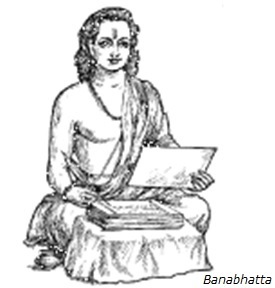
- Ancient Indian History - Home
- Study of Indian History
- Writing of Ancient Indian History
- Imperialist Historiography
- Historiography Nationalist Approach
- Marxist School of History
- Sources of Ancient Indian History
- Archaeological Sources
- Geographical Background
- Geography in Ancient Literature
- Stone Age Cultures
- Mesolithic Culture
- The Neolithic Age
- Chalcolithic Period of India
- Chalcolithic Culture In India
- Harappan Civilization
- Harappan Town Planning
- Harappan Crafts & Industries
- Harappan Culture
- Harappan Religion
- Harappan Chronology
- Vedic Civilization
- Vedic Society
- Vedic Politics
- Vedic Religion & Philosophy
- The Aryan Invasion
- Later Vedic Age
- Social System after Vedic Age
- Achievements of Indian Philosophy
- Evolution of Jainism
- Evolution of Buddhism
- Alexander’s Campaign in India
- Maurya Dynasty
- Kalinga War & its Impact
- Society & Economy during Mauryas
- Mauryan Governance
- Early History of South India
- Age of Smaller Dynasties
- Literature of Satavahana Period
- Society of Satavahana Period
- Economy of Satavahana Period
- Technology of Satavahana Period
- Chola Dynasty
- Pandya Dynasty
- Chera Dynasty
- Period of Foreign Invaders
- Gupta Period
- Decline of Guptas
- Governance of Gupta Period
- Literature of Gupta Period
- Economy in Gupta Period
- Science & Tech of Gupta Period
- India after the Gupta Period
- Period of Harsha
- South India during the Harsha Period
- Kadamba Dynasty
- History of Kamarupa
- India after Harsha
- Gurjara Pratiharas
- Palas of Bengal
- Rashtrakutas of Deccan
- Literature after the Harsha Period
- Society after the Harsha Period
- Economy after the Harsha Period
- Religion after the Harsha Period
- References & Disclaimer
India after the Gupta Period
- After the Gupta period, India was divided into different small and medium kingdoms.
North India
-
There were four major kingdoms in north India between the period in which the Guptas declines and the rise of Harsha (i.e. in the beginning of 7th century), namely −
Guptas of Magadha;
Maukharis of Kanauj;
Maitrakas of Valabhi (Saurashtra); and
Pushyabhutis of Thaneswar.
These four kingdoms (enlisted above) were competed with each other to succeed to the past glory of the Guptas.
The Guptas of Magadha were different from the main imperial Gupta dynasty. It was a minor dynasty of Magadha. It could not be determined whether they were connected in any way with the imperial Guptas. But some of the kings of this Gupta family were very powerful and ruled up to as far as the Brahmaputra River.
The Maukharis occupied the region of western Uttar Pradesh around Kanauj. They captured a part of Magadha.
Isanavarman and his son Sarvavarman were powerful Maukhari kings. They have adopted the title of Maharajadhiraja.
Isanavarman successfully restrained the Hunas who had once again attempted to move towards the heart of India.
The Maitraka clan founded a kingdom in Saurashtra in the west. They made their capital at Valabhi.
Valabhi developed as a seat of learning and culture along with a center of trade and commerce.
The Maitrakas survived the longest and ruled until the middle of the 8th century; however, they were defeated by the Arabs.
The Pushyabhutis of Thaneswar was the fourth Kingdom. It was destined to play a distinguished part in Indian history.
The Pushyabhuti family became known after the Huna invasion. Prabhakarvardhana became a powerful king of this kingdom. He played an important role in the history of India.
Prabhakarvardhana assumed the title of Paramabhattaraka Maharajadhiraja.

Banabhatta described him as a lion to the Huna deer, a burning fever to the king of Sindhu, a troubler of sleep of Gurjara king, a bilious fever to that scent-elephant, the lord of Gandhara, a destroyer of the skill of the Latas, an axe to the creeper, which is the goddess of fortune of Malwa."
Prabhakarvardhanas sovereign kingdom was extended to the whole of Punjab in the north-west and part of Malwa in the south.
There was a Huna invasion in the last phase of Prabhakarvardhanas rule.
Prabhakarvardhana had two sons, Rajyavardhana and Harshavardhana and a daughter Rajyasri. He married his daughter to the Maukhari king Grahavarman.
Prabhakaravardhana had been rapidly extending the boundaries of his kingdom towards the west and south. During this period, two powerful kingdoms were established in Bengal and Assam.
About A.D. 525, one independent kingdom was established in Bengal.
Gauda kingdom comprises western and northern parts of Bengal. They declared their independence; however, the Maukharis defeated them.
Sasanka became the king of Gauda kingdom about half a century later. He founded his capital at Karnasuvarna (near Murshidabad). He occupied the whole of Bengal. He captured Orissa and then advanced towards Kanauj in the west against the Maukharis.
The Maukhari king Grahavarman was married to Rajyasri, daughter of Prabhakaravardhana. This marriage alliance strengthened the position of the two families.
Sasanka (Gauda), with the help of Malwa king, invaded Kanauj after the death of Prabhakaravardhana. The King Grahavarman of Kanauj, was killed and the queen Rajyasri was thrown into prison.
Hearing the news of Kanauj defeat, Rajyavardhana (brother of Harsha) started campaign to suppress the kings of Gauda and Malwa. But he was deceitfully killed by Sasanka.